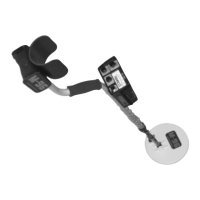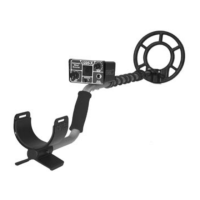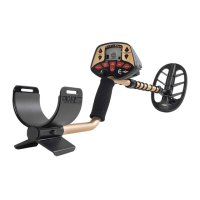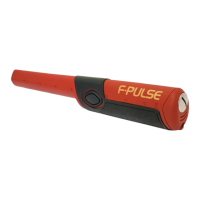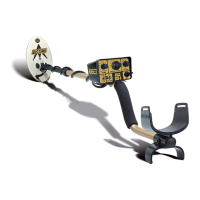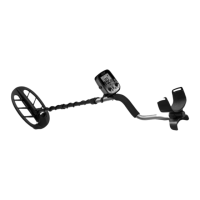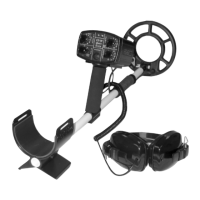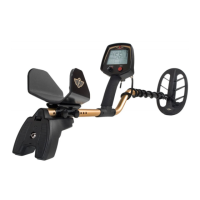SEARCH MODES
13
the surface may set off the bell tone. The optional, smaller
5 inch coil is more likely to overload than the standard
8 inch coil.
10. You may also note that some square tabs ID as round
tabs and vice versa. Because of the wide variety of
sizes, shapes and conductivity of the many pull tabs
manufactured over the years, there is overlap as far as
identification goes. Small pieces of tabs or aluminum are
often misidentified. The tail of a round tab for example,
may ID as a nickel. However, most tabs and most of
the items on the CZ-3D meter face will be identified
correctly.
11. Now increase the DISC control to “1”. You will find that the
CZ-3D rejects the small iron targets and no longer responds
either with an audio tone or needle deflection.
12. Continue to increase your DISC control, noting that with
each successive step up you reject more and more
targets. At DISC = 4 for example, you are in a “coins-only”
mode, ignoring iron, tabs and foil while accepting and
identifying most nickels, zinc pennies and silver, clad and
copper coins.
13. At the maximum DISC level of 6 the CZ-3D will ignore
most all-small targets except silver, clad, zinc and copper
coins.
14. Now switch the DISC control to the AUTOTUNE position
and note the completely different kind of response. No
tone or meter identification, just a solid, smooth, response
over every target.
15. The chart on page 14 shows some of the responses
you may expect over different targets and at different
levels of discrimination. As you progressively increase
the discrimination level, you eliminate more and more
targets.
NOTE: Due to the virtually infinite variety of sizes, shapes and alloys
of many “good” targets (relics, jewelry, foreign coins, etc.), they may be
misidentified. For example, a Civil War mini ball may be identified as foil,
or a new Canadian coin as a rectangular pull tab.
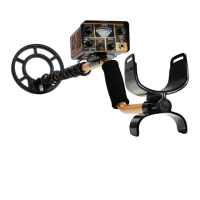
